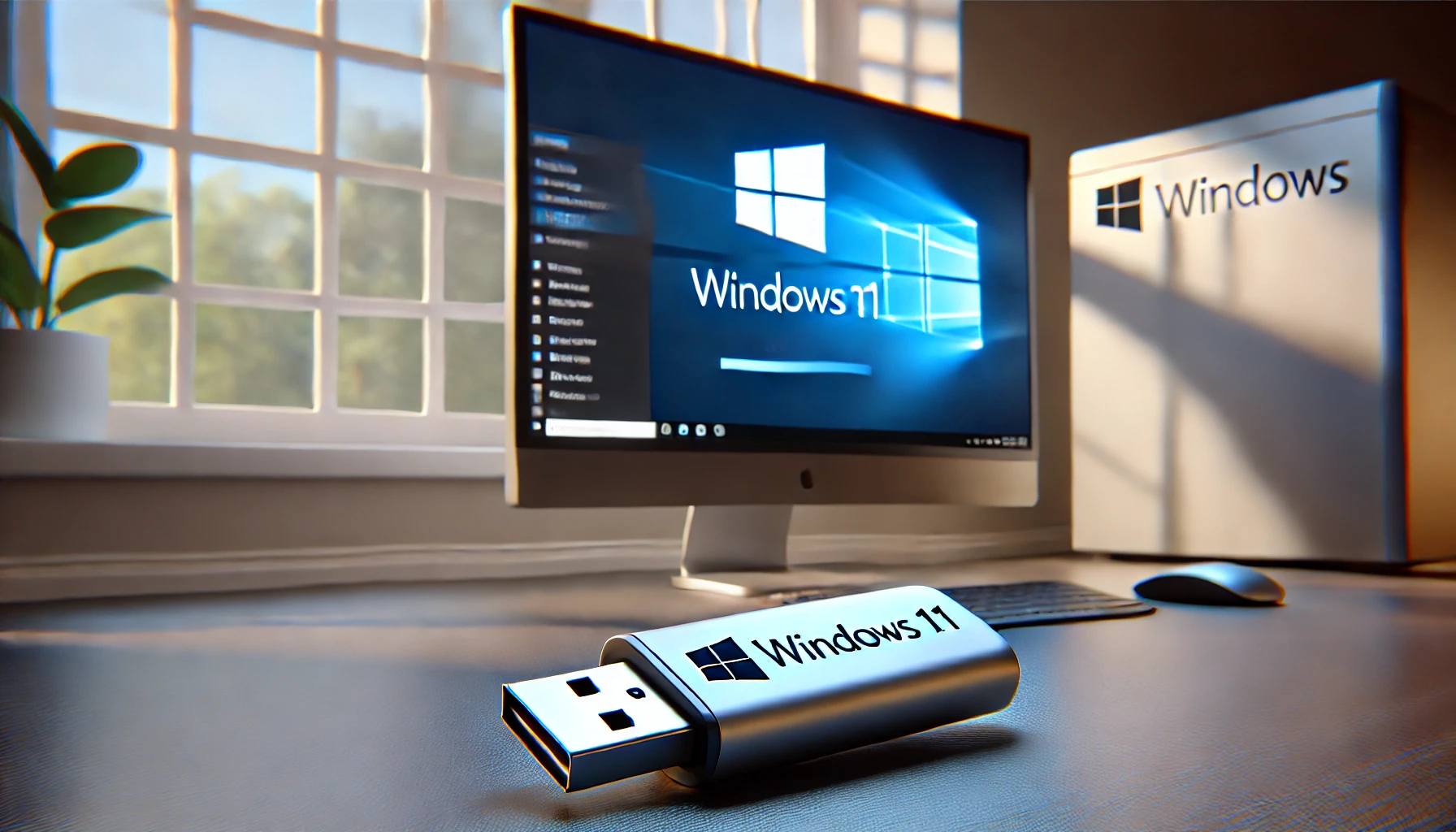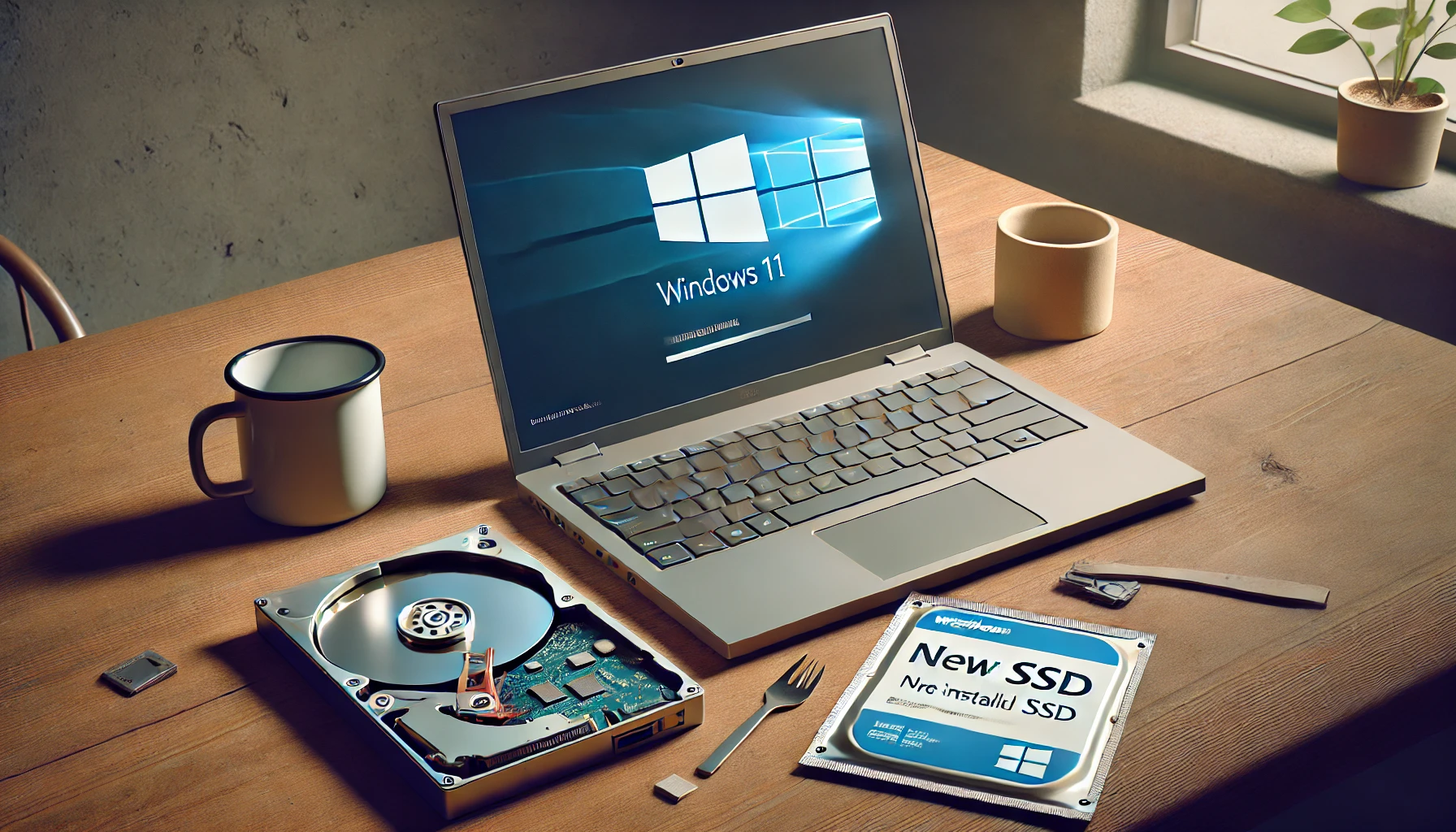Upgrading your old Laptop or PC to Windows 11: A Complete Guide

Are you thinking of breathing new life into your old laptop or desktop? Upgrading from Windows 10 to Windows 11 and installing an SSD are two of the most effective ways to revitalise your machine, improving both speed and compatibility with modern software.
In this complete guide, we’ll guide you through the upgrade process, including overcoming the hurdles of Windows 11’s stringent system requirements, and exploring the benefits of replacing your old hard drive with a modern, faster SSD.
Contents
- 1 I can’t upgrade from Windows 10 to Windows 11! My machine doesn’t meet Windows 11 requirements?
- 2 I’m not that tech savvy, but I don’t want my Laptop to go into Landfill – is there another way?
- 3 Upgrading to Windows 11 with a Pre-Installed SSD: Faster Performance, Easier Installation
- 4 Where to Buy a Pre-Installed SSD with Windows 11
- 5 Final Thoughts: Upgrade Your PC Today!
I can’t upgrade from Windows 10 to Windows 11! My machine doesn’t meet Windows 11 requirements?
Many older computers and laptops running Windows 10 are perfectly capable machines, but Microsoft’s new Windows 11 operating system has specific hardware requirements that might leave some of them ineligible for an upgrade. In particular, Windows 11 requires certain features like TPM 2.0 and Secure Boot, which may not be present or enabled on older devices.
So how do I bypass the Windows 11 Installation Requirements
If you’ve tried to upgrade your system to Windows 11 and received an error message stating your PC doesn’t meet the requirements, don’t worry! There are ways to bypass this. One of the most effective methods is using a tool called Rufus to create a USB installer that can skip some of these requirements.
How to Create a Rufus USB Installer to Bypass Windows 11 Requirements:
- Download Rufus from rufus.ie.
- Download a Windows 11 ISO file from Microsoft’s official website.
- Plug a USB drive (at least 8 GB) into your computer and open Rufus.
- In Rufus, select the USB drive and load the Windows 11 ISO file.
- During the setup, Rufus will offer options to bypass TPM, Secure Boot, and RAM requirements. Make sure these are selected before continuing.
- Click Start to create your Windows 11 USB installer.
With this USB installer, you can attempt to install Windows 11 on your older machine, even if it doesn’t meet Microsoft’s strict criteria. This method does require a bit of technical knowledge, so we would only recommend it if you have some experience with creating bootable USB drives or have a hobbyist background with computers.
 I’m not that tech savvy, but I don’t want my Laptop to go into Landfill – is there another way?
I’m not that tech savvy, but I don’t want my Laptop to go into Landfill – is there another way?
Luckily there is! If you’re looking for a solution that will not only upgrade your operating system but also significantly boost your computer’s performance, consider replacing your old hard drive with an SSD that comes pre-installed with Windows 11.
This method makes the upgrade process plug and play, negating the requirement for a bootable USB drive. There are a few things to check before-hand before obtaining a pre-installed SSD, so keep reading for more information!

Upgrading to Windows 11 with a Pre-Installed SSD: Faster Performance, Easier Installation
One of the most effective upgrades you can make is replacing your old hard drive (HDD) with a solid-state drive (SSD). SSDs are much faster, quieter, and more reliable than traditional spinning hard drives, resulting in noticeable improvements in system performance.If you are not sure whether you currently have a HDD or an SSD, here are 2 easy ways to check.
This makes buying an SSD pre-installed with Windows 11, an even more attractive option alongside the plug and play nature of installing one!
Steps to Buy and Install a Pre-Installed SSD
1. Determine the Type of Drive You Currently Have
- 2.5″/3.5″ HDD or M.2 SSD: Most laptops and older desktops will have a 2.5-inch or 3.5-inch hard drive. To check what type of drive your system uses, you can open up the computer and take a look at the physical drive.
- A 2.5″ drive is typically found in laptops, while a 3.5″ drive is more common in desktops.
- An M.2 SSD is a small, slim drive that plugs directly into the motherboard and is often found in more modern devices.
- If you’re installing a 2.5″ SSD in place of a 3.5″ HDD, you might need a caddy or even some Velcro to securely mount the smaller drive.
2. Identify Your Current Version of Windows
- If you’re running Windows 8.1 or below, you will need a new Windows licence key for the upgrade. However, if you’re already using Windows 10, your licence will be interchangeable with Windows 11, as long as you stick to the same edition (i.e., Home or Pro).
- Be sure to check which edition you currently have, as Windows 10 Home is not interchangeable with Windows 11 Pro and vice versa.
3. Check Your Boot Mode: UEFI or BIOS
- Knowing whether your system uses UEFI or Legacy BIOS is crucial for ensuring compatibility with your new SSD and Windows 11 installation. You can find instructions on how to check your boot mode in our guide here.
Where to Buy a Pre-Installed SSD with Windows 11
Once you’ve determined the type of drive you need, your current Windows version, and boot mode, you’re ready to choose your new SSD. Visit our pre-installed SSDs section for a range of drives that come with Windows 11 pre-installed. As long as you’ve checked the details above, these drives are plug-and-play—simply swap your old HDD or SSD for the new one, and you’ll be up and running with Windows 11 in no time.
Final Thoughts: Upgrade Your PC Today!
Upgrading to Windows 11 and replacing your old hard drive with a modern SSD can breathe new life into your old computer or laptop, giving you the performance boost you need to handle today’s demanding software. Whether you decide to bypass Windows 11’s installation requirements using Rufus or choose the more comprehensive solution of purchasing a pre-installed SSD, the process is more straightforward than you might think.
If you need any help, our team at Preloved Laptops is here for you! We’re available Monday to Friday, 9 am to 4 pm, via live chat or contact form. Don’t hesitate to reach out if you have any questions or need assistance with your upgrade.
 I’m not that tech savvy, but I don’t want my Laptop to go into Landfill – is there another way?
I’m not that tech savvy, but I don’t want my Laptop to go into Landfill – is there another way?